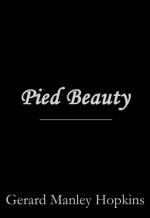|
This section contains 354 words (approx. 1 page at 400 words per page) |

|
• 1870s: Hopkins’s innovative use of sprung rhythm, alliteration, compound words, and condensed syntax, in part borrowed from Anglo-Saxon and Welsh poetic techniques, is considered radical, strange, and shocking.
• Today: Poetic techniques pioneered by Hopkins have entered the mainstream of literature, having influenced such poets as T. S. Eliot, W. H. Auden, Dylan Thomas, Stephen Spender, C. Day Lewis, and Ted Hughes. Modern poets use a variety of regular and irregular metrical styles, alliteration, and compound words to express their meaning.
***• 1870s: The Industrial Revolution reaches its height in Britain, prompting writers to comment on the profound social, environmental, and economic changes it brings in its wake. It also brings a renewed interest in the beauty and sacredness of nature, expressed in keenly observed detail in Hopkins’s poetry.
• Today...
|
This section contains 354 words (approx. 1 page at 400 words per page) |

|




